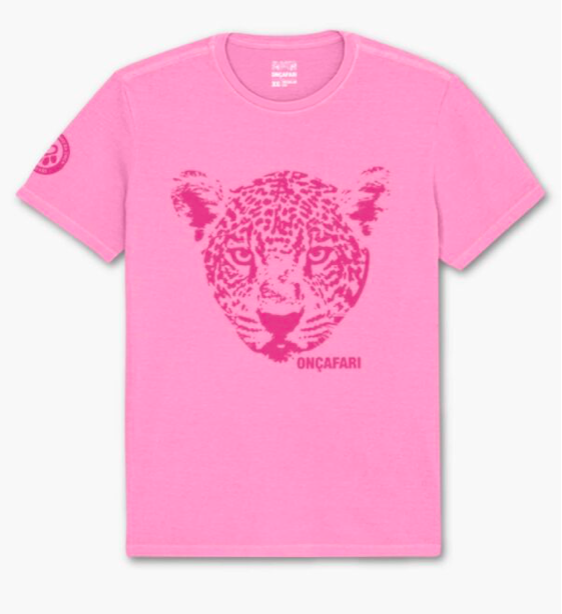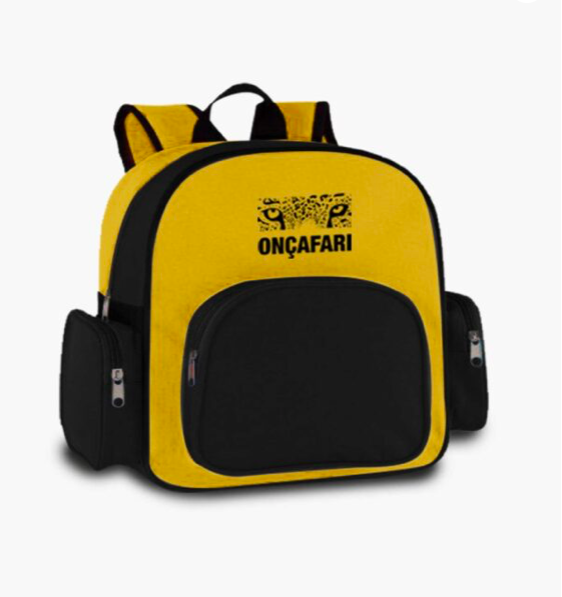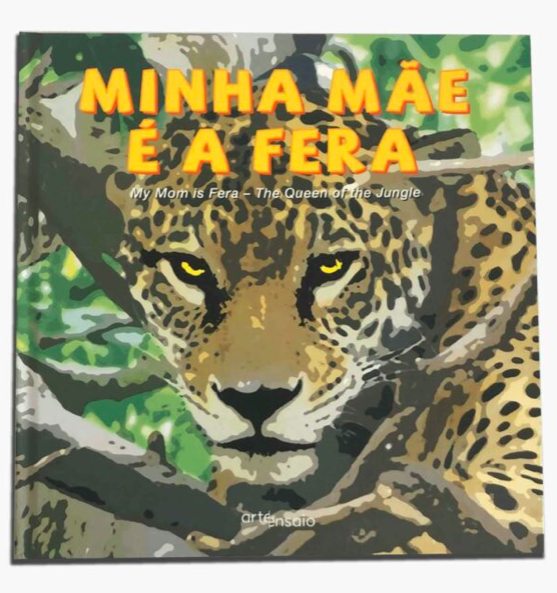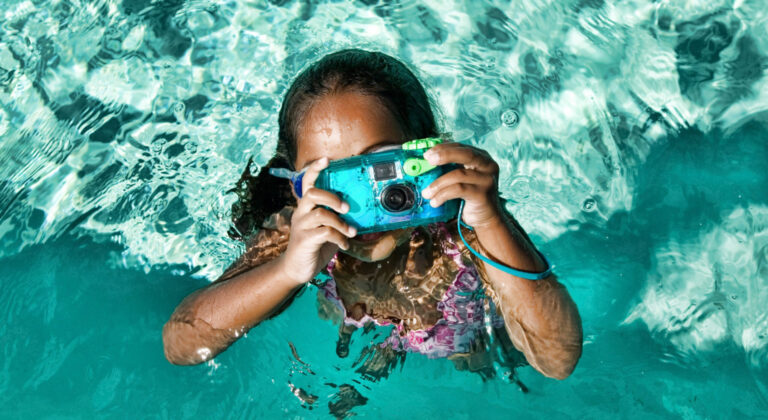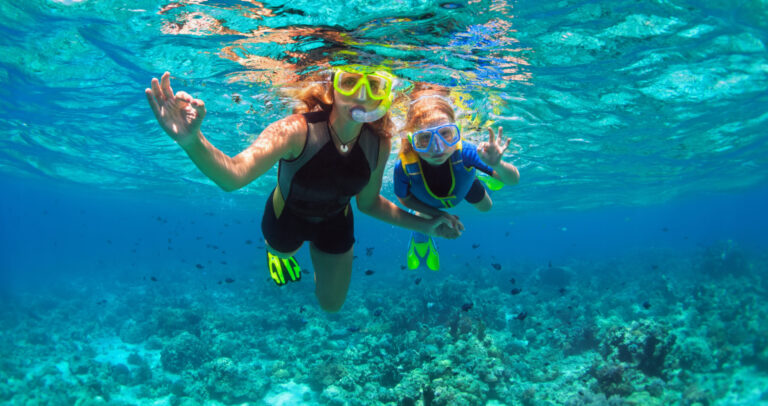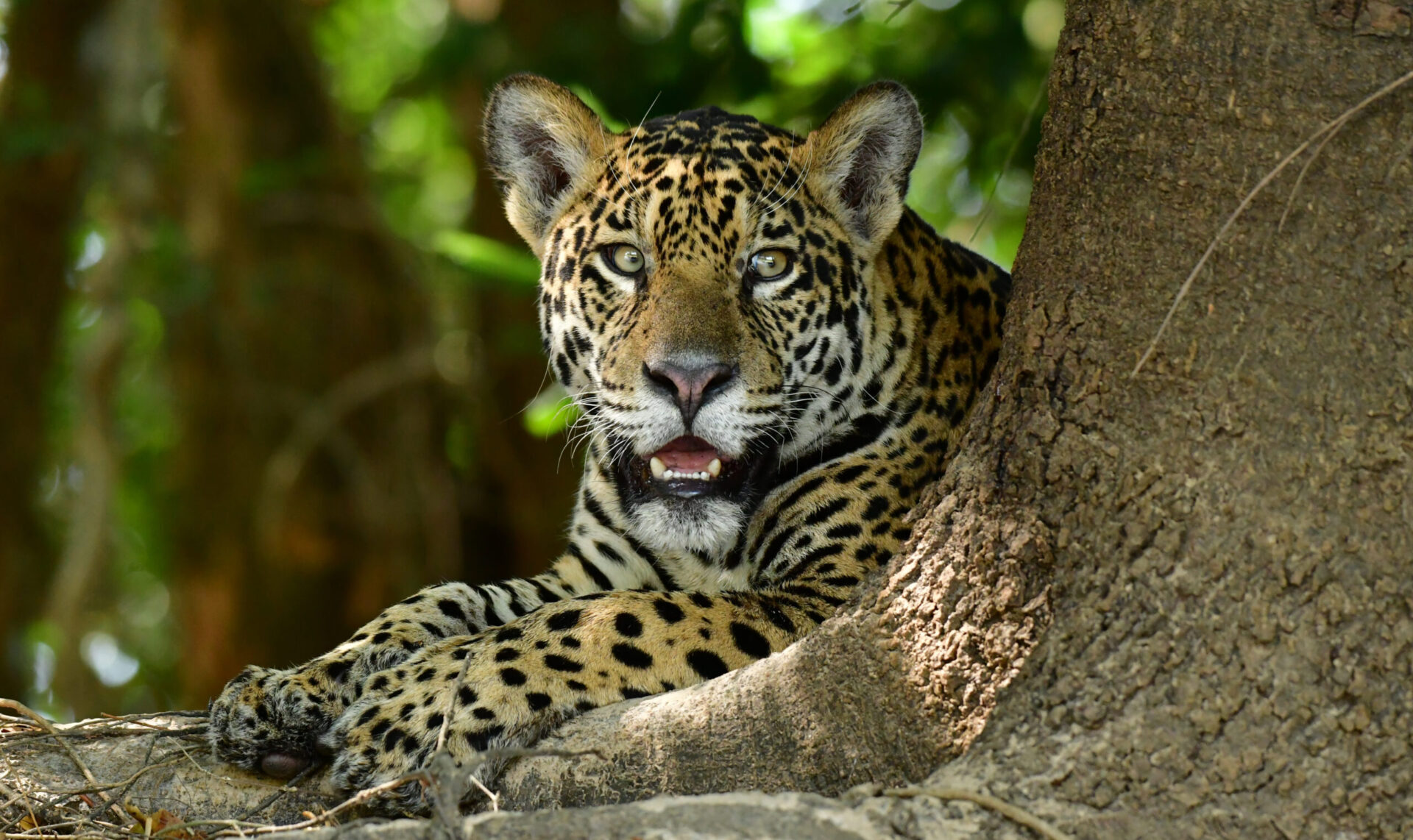
A safari to see the jaguars in the Pantanal
Thanks to the Onçafari Association [onça is Portuguese word for jaguar], the biggest cat in the Americas is the star among the 5 large animals that can be seen
By Daniel Nunes Gonçalves
At first, it’s a little difficult to convince the kids to get out of bed before the sun rises to try to see some wild animals on the loose in the Pantanal, which is the best region in Brazil to observe wildlife. “In the zoo, this would not be necessary,” one might think. However, once the initial reticence is over, the reward for the effort usually comes in the first moments of the morning, on board a 4×4 jeep surrounded by the reddish sky of the Pantanal dawn.
After some suspense chasing footprints and scratches in the trees in search of the animals, three beautiful jaguars appear, a few meters from the vehicle, feeding on a recently slaughtered young ox. Where is the camera to take pictures? The heart races. The kids want to scream with euphoria, but are not allowed to because the guide whispers it will scare the animals. The rush of adrenaline confirms everything: the adventure of searching for – and finding – the wild animal in its natural habitat is a thousand times cooler than any planned visit to a city zoo.
Ten years of Onçafari in the Pantanal
Thanks to a successful initiative by the Onçafari Association, which combines conservation with tourism, the sighting of the jaguars is a common experience in Caiman. For 35 years, this traditional livestock farm has received guests in the Miranda region, in Mato Grosso do Sul, which is the most accessible for tourists in the Brazilian Pantanal. However, it was only after Onçafari set up there, 10 years ago, that 95% of the guests from the 18 apartments of Casa Caiman (which only accepts children 8 years and over) and in its two private villas began to see at least one jaguar during their visit.
Not only this: in the typical 4-day package, while we are looking for the jaguars, other species of fascinating fauna from the Center-West of Brazil appear. And, just like on those safaris in Africa, children want to see the “Big Five” of the Pantanal and complete their diploma with the stamps of the animals they have seen. If, in Africa, the five major animals are the lion, elephant, buffalo, rhinoceros and leopard, in the Pantanal the largest animals are very Brazilian: the tapir, the largest land mammal in South America; the giant anteater, which is the largest anteater in the world; the marsh deer, a species of deer that is the largest in South America; the capybara, the largest rodent on the planet; and the jaguar, the largest cat in the Americas.
Of course, unlike the zoo, in nature we can never be sure that we will find the animal we would like to see. But the caimans, peccaries and jabirus – these are the symbols of the Pantanal – also make the whole family happy. The sightings are not just a matter of luck. The experienced guides – including the biologists and veterinarians from Onçafari – stay in touch, with a radio in each car. If someone sees an animal, they notify their colleagues in the other vehicles and pass on the GPS coordinates for a new group of tourists to have the privilege of seeing these animals in the flesh.
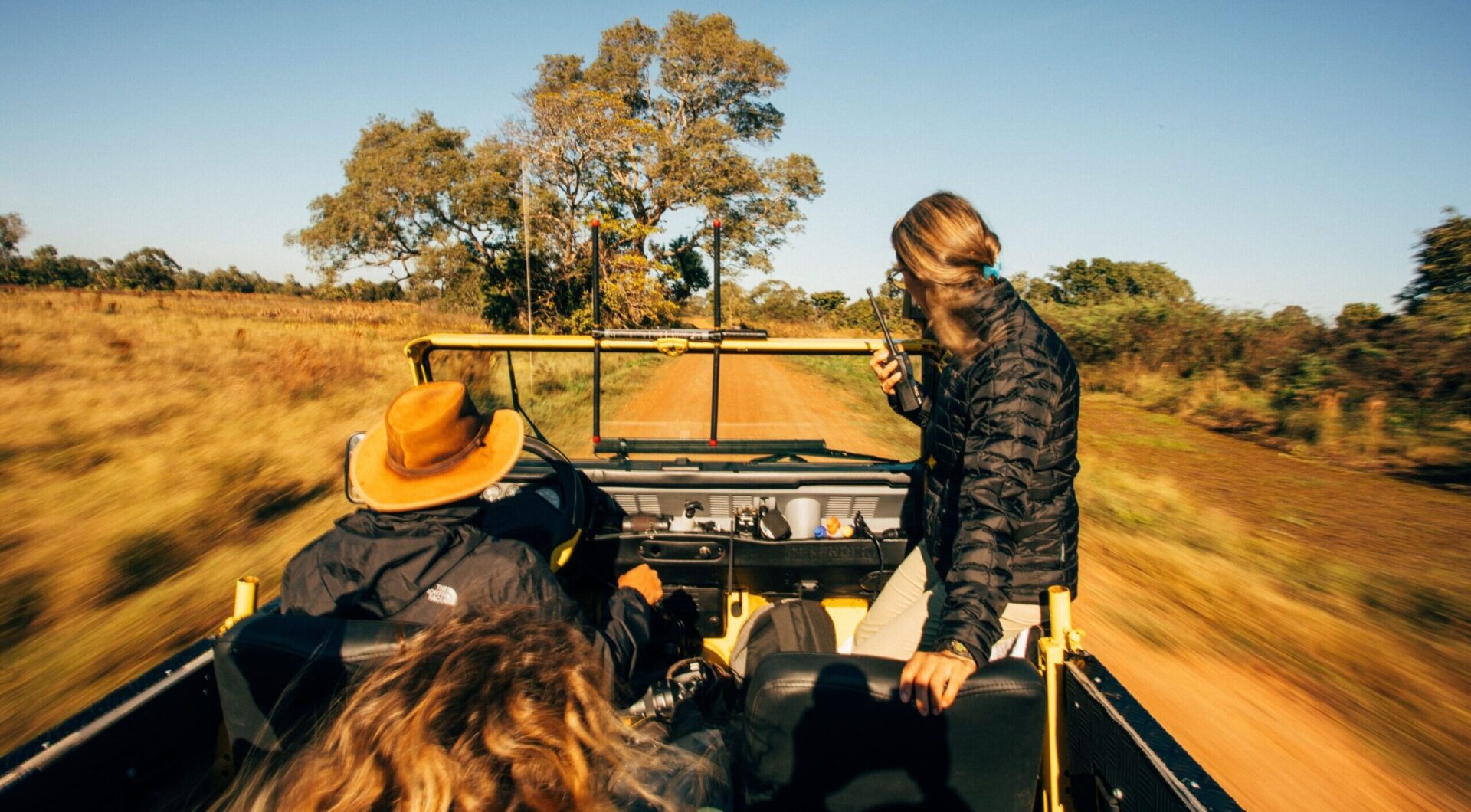
From Formula 1 to the interior of Brazil
Created by the former Formula 1 test driver, Mário Haberfeld, Onçafari saw its project of sighting and monitoring jaguars work so well in the Pantanal that it ended up growing and expanding. At Caiman, only guests can participate in what is considered the best safari in Brazil. “Our careful method of familiarizing the animals to the presence of the vehicles has now been reproduced in other circumstances, with other animals and other biomes,” explains Mário, who has experienced the best safaris in the world in order to create Onçafari.
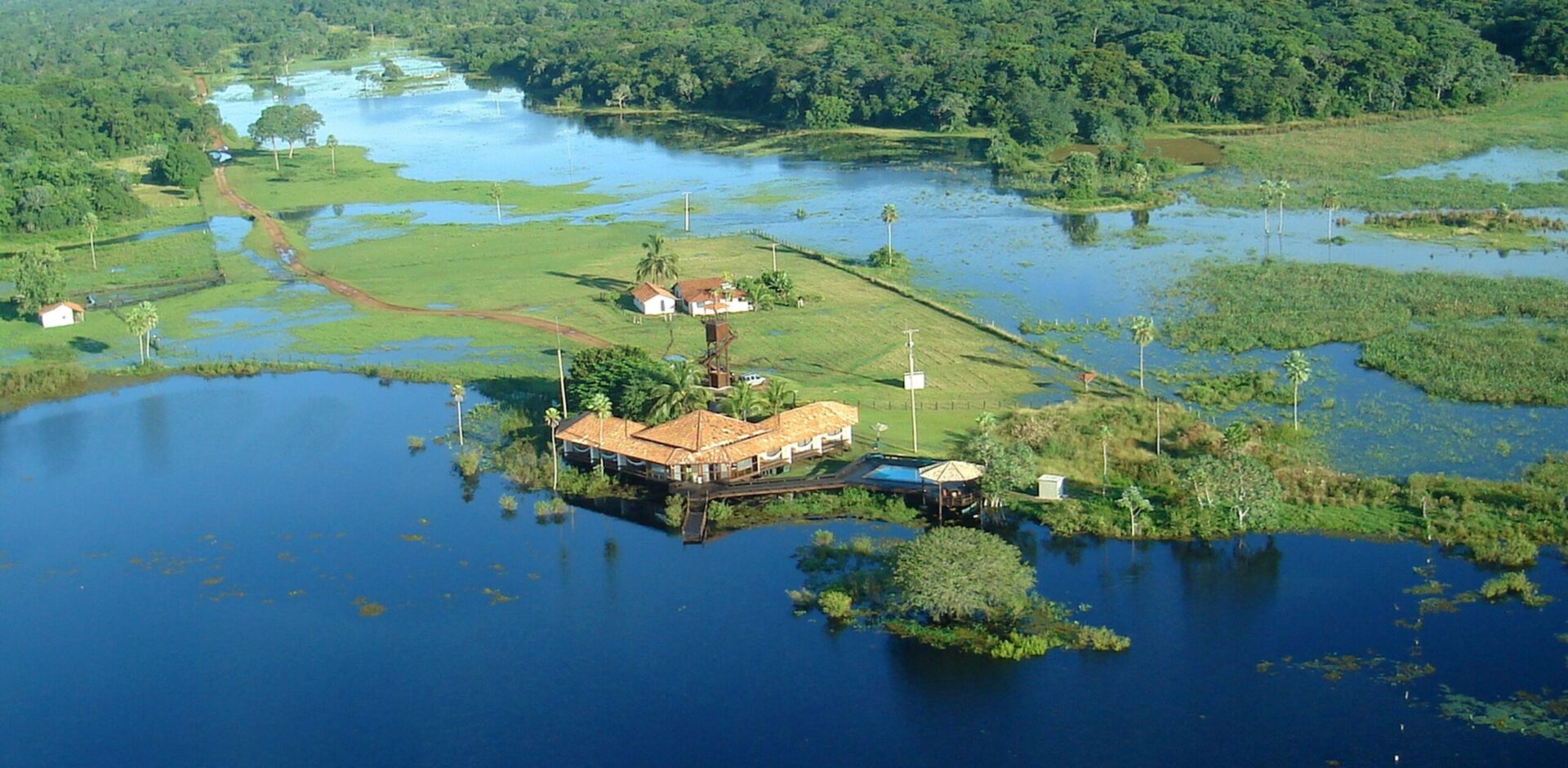
Currently, it is possible to accompany the passionate guides and scientists of Onçafari at seven points in Brazil. Among the possible experiences, you can see the maned wolves in the savanna at Pousada Trijunção, where the states of Minas Gerais, Goiás and Bahia are found, and pumas at the Legado das Águas, which is an Atlantic Forest reserve in the state of São Paulo. On the properties where it operates, Onçafari promotes not only ecotourism and science, but also the preservation of forests, social contributions, education and the reintroduction of species to nature.
At Caiman, the flagship for the actions of Onçafari, more than 200 jaguars have been sighted during this decade of partnership. In addition to the scientific studies, the combination of the luxury accommodation with this high-level safari inspired by the African originals has helped in the preservation of the species. One of the most efficient works has been the consciousness-raising of the local farmers so that they do not kill the jaguars, because their existence brings employment and income to the ecotourism of the region. Do you know what happens when the visitor experiences the euphoria of seeing jaguars happy to live in their natural habitat?
Everyone comes back from the Onçafari experience with a greater passion for nature – and aware of the importance of keeping the Brazilian fauna well-preserved. With children lucky enough to know about projects like this from an early age, it only increases the chance of having a new generation that is more engaged and careful.
How to collaborate with Onçafari:
It is possible to “adopt a jaguar,” buy social products and help to sponsor the projects of the Association. The highlight for the children’s area of the site is products for kids (t-shirts, teddy bears, backpacks and books) and activities and drawing books to color in. Even those who do not have the opportunity to go to the Pantanal are impressed by its defense of the felines.
More information at www.oncafari.org
Services
Plan your experience with Onçafari in Caiman:
ACCESS
To reach Caiman, you have to fly to Campo Grande, the capital of Mato Grosso do Sul, and then drive for about 240 kilometers (or 3½ hours) to the farm, which is in the municipality of Miranda. The resort has its own airstrip for those who prefer to arrive on private flights.
BOOK IN ADVANCE
The safari with the chances to see jaguars is part of the daily program of any guest in Caiman. The immersion in the excellent work of Onçafari, however, is an optional program that requires advance reservation and an extra payment. With its own cars, staff and protocols, the association provides a wealth of knowledge. The visitors feel like the scientists’ very own assistants, leaving Caiman knowing everything about jaguars.
THE BEST TIME
The Pantanal changes radically in appearance during the dry and rainy seasons. With less water, from July to October, you can see more animals. The rainy season, from December to March, is greener, full of flooded areas and a great time for bird watching.
HOTEL
Caiman
You must stay at Caiman to be able to participate in the best-structured safaris in Brazil. With 18 suites in the new Casa Caiman (which only accepts children 8 years and above) and two private villas with 5 and 6 suites, Baiazinha and Cordilheira, Caiman has a swimming pool, restaurant and super comfortable social areas. The exclusive excursions with the biologists from Onçafari Association and the Instituto Arara Azul* [The Hyacinth Macaw Institute] are optional tours, but are highly recommended.
www.caiman.com.br
Things The Family Way love to pack in their suitcase:
Gate
Eletronics for the travel: smartphone, drone, câmera, charger,…
Destiny
UV clothes, bikinis, caps, diving goggles, snorkel mask and other accessories…



